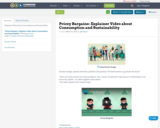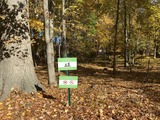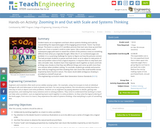
Explainer Video about Consumption and Sustainability
- Subject:
- Business and Communication
- Education
- Life Science
- Social Science
- Material Type:
- Lecture
- Date Added:
- 03/08/2016

Explainer Video about Consumption and Sustainability

Psychology is designed to meet scope and sequence requirements for the single-semester introduction to psychology course. The book offers a comprehensive treatment of core concepts, grounded in both classic studies and current and emerging research. The text also includes coverage of the DSM-5 in examinations of psychological disorders. Psychology incorporates discussions that reflect the diversity within the discipline, as well as the diversity of cultures and communities across the globe.Senior Contributing AuthorsRose M. Spielman, Formerly of Quinnipiac UniversityContributing AuthorsKathryn Dumper, Bainbridge State CollegeWilliam Jenkins, Mercer UniversityArlene Lacombe, Saint Joseph's UniversityMarilyn Lovett, Livingstone CollegeMarion Perlmutter, University of Michigan


By the end of this section, you will be able to:Define and distinguish between the three domains of development: physical, cognitive and psychosocialDiscuss the normative approach to developmentUnderstand the three major issues in development: continuity and discontinuity, one common course of development or many unique courses of development, and nature versus nurture

Our group questioned the actions and behaviors taken by communities and individuals to participate in solving the environmental issues of life on land, life below water, water and sanitation, and climate action. We did this through personal observations and collection of data monitored by photographs within the different environments and communities, both the city and outside the city.

Students are going to play a categories game as their warm up, and then create questions to be used in the next activity. As a category is displayed on the screen, students will go around and say things that fall under that category. They will use example questions to create their own.

This course considers how the visual and material world of "nature" has been reshaped by industrial practices, ideologies, and institutions, particularly in nineteenth- and twentieth-century America. Topics include land-use patterns; the changing shape of cities and farms; the redesign of water systems; the construction of roads, dams, bridges, irrigation systems; the creation of national parks; ideas about wilderness; and the role of nature in an industrial world. From small farms to suburbia, Walden Pond to Yosemite, we will ask how technological and natural forces have interacted, and whether there is a place for nature in a technological world.
Acknowledgement
This class is based on one originally designed and taught by Prof. Deborah Fitzgerald. Her Fall 2004 version can be viewed by following the link under Archived Courses on the right side of this page.

This course will consider the ways in which technology, broadly defined, has contributed to the building of American society from colonial times to the present. This course has three primary goals: to train students to ask critical questions of both technology and the broader American culture of which it is a part; to provide an historical perspective with which to frame and address such questions; and to encourage students to be neither blind critics of new technologies, nor blind advocates for technologies in general, but thoughtful and educated participants in the democratic process.

In this lesson, students will investigate how trees change by the season. Includes discussion of techniques for identifying trees, journaling changes that take place over time for the same tree throughout the school year, a list of vocabulary, a field guid to identifying trees, and a tree journal worksheet for students.
NGSS: Partially meets 2-LS4-1
Common Core: W.2.7, W.2.8, 2.MD.D.10
Social Sciences: 3.12, 4.12
Time: 1 hour initially, then 30-40 minute lessons through the seasons
Materials: "The Seasons of Arnold's Apple Tree" book, My Tree Journal pages (included), pencils, colored pencils, and clipboards.

This list presents a basic set of vocabulary words that deal with nouns and verbs that describe natural habitats, geography, and weather conditions. The majority of words contained within the website are nouns, and some verbs are interspersed. The nouns and verbs are presented in both modern standard and colloquial Egypt, and feature Arabic text and transliteration.

Student teams act as engineers and learn about systems thinking and scale by reassembling the separated pages of the engaging picture book, “Zoom,” by Istvan Banyai. The book is a series of 31 wordless pictures that start very close-up and then zoom out—from a rooster’s comb to outer space. Like a movie camera, each subsequent page pulls back to reveal the context of the previous scene as something different than what you originally thought. When the 31 un-numbered pages are jumbled, it is a surprising challenge for teams to figure out how the pictures connect. The task prompts students to pause and look closer so as to adjust to new points of view and problem solve to find a logical sequence. It requires them to step back and take a broader view. Students learn that engineers work together as teams and look at things very closely so that they see different things and come up with more than one solution when problem solving. To conclude, students go outside and practice their skills by imagining and then drawing their own Zoom-like small booklet stories inspired by items found in nature. The classic duck/rabbit ambiguous drawing is provided as a kickoff visual aid.